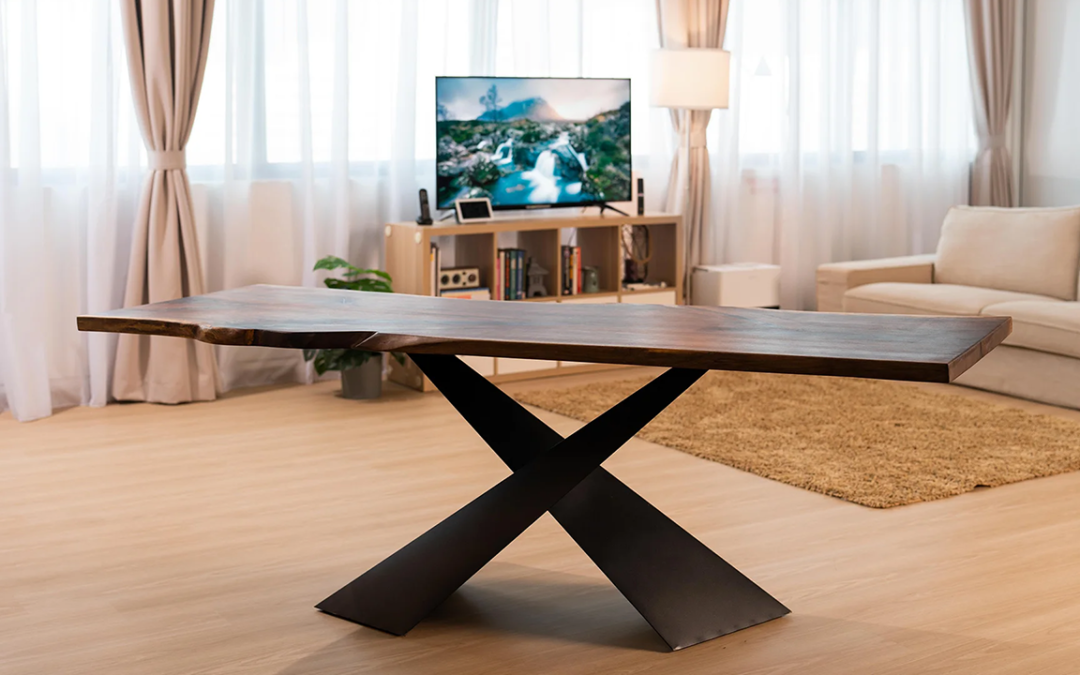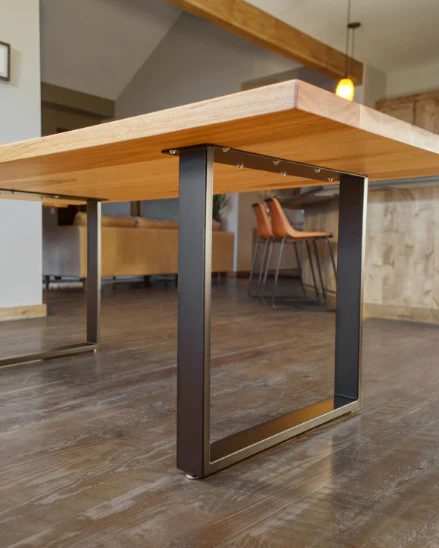From Standard to Modern: Find the Ideal Dining-room Table Legs for Your Design
The option of dining-room table legs plays a pivotal duty in specifying the general character of your room, connecting the gap in between standard craftsmanship and modern-day visual appeals. While classic layouts such as cabriole and turned legs stimulate a sense of classic sophistication, contemporary designs like hairpin and geometric alternatives provide a chance for striking visual passion. Examining the right equilibrium between these designs needs a nuanced understanding of your existing decoration and personal taste. As you take into consideration these aspects, the question stays: exactly how can you perfectly incorporate these diverse leg styles to develop a harmonious eating experience?
Comprehending Table Leg Styles
The selection of dining-room table leg designs can dramatically influence both the aesthetic appeals and functionality of the area. Each leg design contributes unique useful features and aesthetic components, satisfying diverse layout preferences and usage demands. Understanding these designs is essential for picking the ideal table that aligns with your general indoor style vision.
For example, tapered legs offer a clean, traditional look that can enhance a space's elegance, while stand bases provide security and make the most of legroom, making them suitable for smaller spaces. Hairpin legs, a trademark of mid-century contemporary layout, present a commercial flair, allowing for an airy, open feel. In a similar way, trestle legs stimulate rustic charm, giving durable assistance and a sense of eternity.
Wooden legs can bring warmth and texture, whereas metal choices typically convey a smooth, modern vibe. Eventually, understanding table leg designs is crucial for producing a cohesive dining location that reflects personal style while guaranteeing usefulness and convenience.
Traditional Table Leg Options
When picking dining-room table legs, traditional alternatives typically symbolize classic beauty and workmanship. These designs show a rich heritage and a commitment to top quality, making them excellent for those that value classic aesthetic appeals.
One of one of the most famous typical leg styles is the cabriole leg, defined by its elegant rounded form. This design frequently includes ornamental carvings and is most generally found in Queen Anne and Chippendale furniture. Another preferred alternative is the turned leg, which boasts a collection of smooth, rounded forms that supply a timeless look while keeping security.
Furthermore, the straight leg, while basic, uses a unadorned and sturdy framework that can mix effortlessly with a variety of tabletop designs. For those drawn to ornate detailing, claw-and-ball feet legs stimulate a feeling of majesty and can act as a spectacular focal factor in any type of dining area.
Lastly, stand bases, although not strictly legs, supply a different typical option that permits ample legroom and can be magnificently sculpted. Each of these standard leg styles adds to the general ambiance of a dining-room, weding feature with visual allure.

Modern Table Leg Designs
Modern table leg layouts provide a diverse array of styles that stress tidy lines and innovative materials. These designs frequently focus on capability while functioning as striking focal factors within an eating room. Minimalist visual appeals prevail, with legs crafted from products such as steel, glass, and crafted wood, which add to a airy and modern feeling.
One preferred design is the barrette leg, defined by its slim, tapered structure that gives security without overwhelming the table top (dining room table legs). This design is frequently found in mid-century modern furnishings and can easily match different eating table forms. One more pattern is making use of geometric forms, where legs may take on asymmetrical or angular kinds, adding visual passion and a touch of virtuosity

Blending Designs for Unique Spaces
Typically, homeowners seek to develop distinct eating areas that reflect their individual style by mixing various style elements. This method permits for the consolidation of varied aesthetic appeals, leading to an unified yet distinct atmosphere. For example, pairing a rustic wooden table with streamlined, modern-day steel legs can develop a captivating find here comparison that boosts the space's general appeal.
Additionally, incorporating vintage table legs with contemporary table tops can stimulate a sense of background while maintaining a modern-day perceptiveness. Such combinations not only display specific preference yet also urge imagination, permitting home owners to curate a room that feels both individual and welcoming.
Shade plays a vital original site function in this mixing procedure; choosing table legs that enhance or comparison with the existing color pattern can enhance visual passion. Whitewashed legs can soften the daring of a dark table surface, developing a well balanced aesthetic.
Tips for Selecting the Right Legs
Picking the right table legs is crucial for attaining both capability and visual allure in your eating area. Begin by taking into consideration the overall style of your space. Traditional settings gain from legs that include detailed makings or turned styles, while modern rooms might call for sleek, minimalist designs.
Following, analyze the elevation and security of the legs. dining room table legs. Standard dining tables vary in between 28 to 30 inches in elevation, so make certain the legs match this dimension for comfort. Additionally, robust materials, such as hardwood or steel, can boost stability and durability
Assess the leg form as well-- choices consist of straight, tapered, or stand designs. Straight legs use a timeless appearance, while conical legs can include a touch of style. Pedestal bases give ample legroom and are perfect for smaller sized spaces.
Final Thought
In recap, picking the excellent dining area table legs needs careful factor to consider of both modern and conventional designs. By harmonizing leg design, elevation, click to read and material with the general décor, a cohesive and inviting environment can be attained.
The selection of dining room table leg styles can substantially affect both the aesthetic appeals and functionality of the area. Inevitably, understanding table leg designs is essential for producing a natural dining area that shows individual design while guaranteeing functionality and convenience.One of the most iconic standard leg styles is the cabriole leg, characterized by its graceful curved form. Straight legs use a traditional appearance, while tapered legs can include a touch of sophistication.In recap, choosing the excellent eating area table legs needs mindful factor to consider of both typical and modern styles.